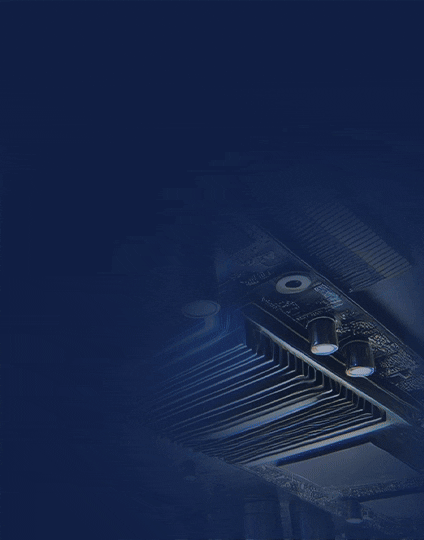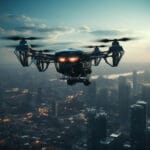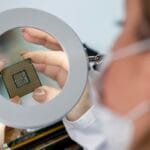In today’s rapidly evolving technological landscape, the Internet of Things (IoT) has emerged as a transformative force, connecting devices and enabling seamless communication across various applications.
From smart homes and wearable health devices to industrial automation and smart cities, IoT technology has the potential to revolutionize our daily lives and operational efficiencies.
However, as the number of connected devices grows, so does the challenge of managing their power consumption effectively.
Power management is a critical concern in the realm of IoT, primarily due to the limitations of battery life and the increasing demand for energy efficiency. Many IoT devices operate in remote or hard-to-reach locations, making the ability to optimize power usage essential for their functionality and longevity.
This is where Field-Programmable Gate Arrays (FPGAs) come into play. FPGAs offer a versatile and adaptable solution for power management, enabling developers to create energy-efficient designs that meet the specific needs of their IoT applications.
In this blog, we will explore the significance of power management in IoT devices and delve into the advantages of using FPGAs as a power management solution.
We will discuss key strategies that leverage FPGA technology to enhance energy efficiency and highlight real-world case studies showcasing successful implementations.
By the end, you will gain a comprehensive understanding of how FPGA-based power management can pave the way for sustainable and efficient IoT solutions.
Why Choose FPGAs for Power Management?
Field-Programmable Gate Arrays (FPGAs) have gained traction as a compelling choice for power management in IoT devices due to their unique characteristics and capabilities. Here are several key reasons why FPGAs stand out in this domain:
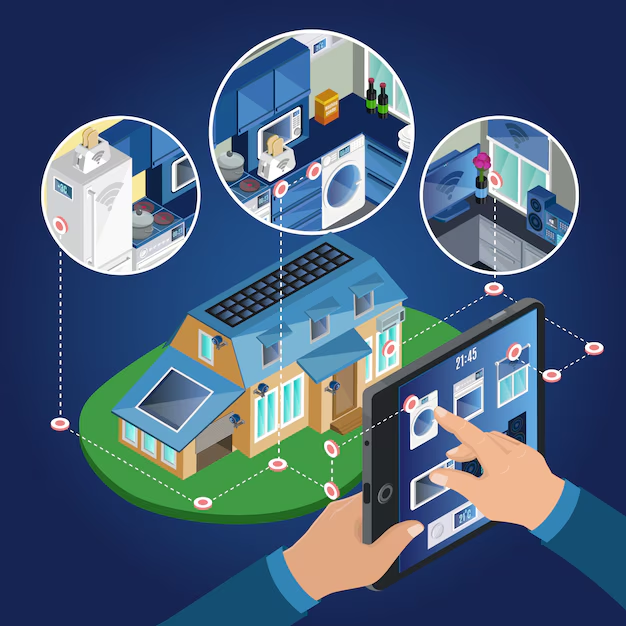
1. Flexibility and Reconfigurability
One of the most significant advantages of FPGAs is their inherent flexibility. Unlike fixed-function ASICs (Application-Specific Integrated Circuits), FPGAs can be reconfigured post-manufacturing to adapt to changing requirements. This adaptability allows designers to implement various power management strategies, such as voltage scaling and power gating, tailored to specific applications and evolving technologies. This reconfigurability is particularly beneficial in IoT devices, where standards and requirements may shift over time.
2. Parallel Processing Capabilities
FPGAs excel at parallel processing, allowing multiple operations to be executed simultaneously. This capability is crucial for real-time power management, where timely responses to varying power demands are essential. By distributing processing tasks across multiple logic blocks, FPGAs can effectively manage power consumption, leading to enhanced efficiency and responsiveness in IoT devices. This parallelism enables FPGAs to perform complex power management algorithms while minimizing latency.
3. Integration of Multiple Functionalities
FPGAs can integrate various functionalities on a single chip, combining processing, communication, and power management tasks. This integration reduces the need for multiple discrete components, which can simplify the design, decrease the overall system size, and lower costs. In IoT applications, where space and energy are at a premium, the ability to consolidate functions onto one chip is a significant advantage.
4. Support for Dynamic Power Management Techniques
FPGAs are well-suited for implementing advanced dynamic power management techniques, such as Dynamic Voltage and Frequency Scaling (DVFS) and adaptive power management. DVFS allows the FPGA to adjust its voltage and frequency based on workload demands, significantly reducing power consumption during idle or low-activity periods. This capability not only extends battery life but also enhances the overall efficiency of IoT devices.
5. Real-Time Monitoring and Feedback
FPGAs can be designed to incorporate real-time monitoring and feedback mechanisms, allowing for continuous assessment of power usage and environmental conditions. This capability enables IoT devices to make intelligent decisions regarding power management on-the-fly, optimizing performance and extending battery life. With integrated sensors and algorithms, FPGAs can adapt to dynamic conditions, ensuring efficient operation in diverse scenarios.
6. Cost-Effectiveness for Low-Volume Applications
For applications where high-volume production is not feasible, FPGAs can be a cost-effective solution compared to ASICs, which typically require significant upfront investment in design and manufacturing. With FPGAs, developers can quickly prototype and iterate designs without incurring the high costs associated with ASIC development. This rapid development cycle is particularly advantageous in the fast-paced IoT landscape.
Key FPGA-Based Power Management Strategies for IoT Devices
Implementing effective power management strategies is essential for maximizing the efficiency and longevity of IoT devices. FPGAs offer several innovative approaches that can be employed to enhance power management capabilities. Here are some key FPGA-based power management strategies for IoT devices:
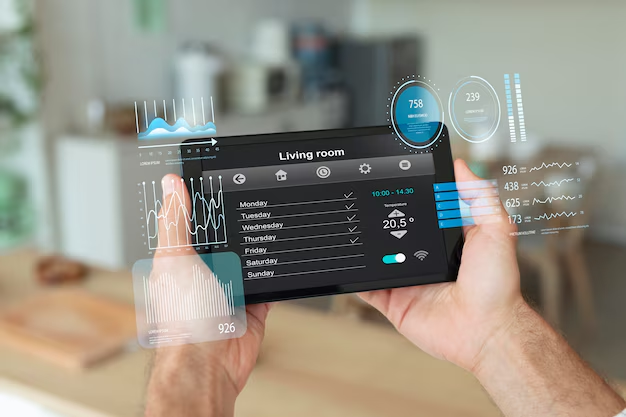
1. Dynamic Voltage and Frequency Scaling (DVFS)
Dynamic Voltage and Frequency Scaling (DVFS) is a technique that adjusts the voltage and frequency of an FPGA dynamically based on the current workload. By lowering the voltage and frequency during periods of low activity, power consumption can be significantly reduced. FPGAs can implement DVFS effectively due to their ability to reconfigure their operational parameters in real-time, allowing them to adapt to varying processing demands. This strategy not only enhances energy efficiency but also prolongs battery life in IoT devices.
2. Power Gating
Power gating involves shutting off power to specific components of an FPGA when they are not in use, thereby minimizing energy waste. This strategy can be particularly useful in IoT applications, where devices often remain in idle states for extended periods. FPGAs can be programmed to manage power gates efficiently, selectively powering down portions of the chip that are not needed, while keeping critical functions operational. This selective powering enhances overall system efficiency and helps in managing thermal performance.
3. Adaptive Power Management
Adaptive power management leverages real-time data and feedback mechanisms to optimize power usage based on current conditions. FPGAs can be designed to monitor environmental factors, workload variations, and energy consumption continuously. By employing algorithms that analyze this data, FPGAs can make intelligent decisions about adjusting power states, switching between low-power and high-performance modes as needed. This adaptive approach ensures that IoT devices operate at maximum efficiency without compromising performance.
4. Multi-Mode Operation
FPGAs can support multi-mode operation, allowing them to switch between different power modes based on application requirements. For example, a device may operate in a high-performance mode when active and switch to a low-power mode during standby. This flexibility enables IoT devices to conserve energy without sacrificing functionality. By programming FPGAs to toggle between modes efficiently, designers can achieve significant reductions in power consumption.
5. Hardware Acceleration for Power-Sensitive Applications
FPGAs are capable of implementing hardware accelerators for specific tasks, which can improve performance and reduce power consumption. By offloading intensive computations from a general-purpose processor to an FPGA, IoT devices can achieve higher efficiency. For instance, applications involving signal processing or data analytics can benefit from FPGA-based hardware accelerators that perform tasks more efficiently than software implementations, thus conserving power.
6. Energy Harvesting Integration
FPGAs can be utilized in conjunction with energy harvesting technologies, allowing IoT devices to gather power from their environment. For instance, FPGAs can manage the input from solar panels, piezoelectric devices, or thermal energy sources, optimizing energy usage and storage. By integrating energy harvesting capabilities, IoT devices can minimize dependence on traditional power sources, promoting sustainability and enhancing operational autonomy.
7. Low-Power Design Techniques
FPGA design practices that emphasize low power consumption can significantly enhance the energy efficiency of IoT devices. Techniques such as optimizing the logic architecture, minimizing switching activity, and employing low-power components during design can lead to substantial power savings. FPGAs provide various design tools and methodologies to implement these low-power strategies effectively, enabling engineers to develop energy-efficient solutions tailored to their specific IoT applications.
Comparing FPGA Solutions with Other Technologies
When considering power management solutions for IoT devices, it’s essential to compare Field-Programmable Gate Arrays (FPGAs) with other available technologies, particularly microcontrollers and Application-Specific Integrated Circuits (ASICs). Each technology has its strengths and weaknesses, and the choice often depends on specific application requirements, design goals, and budget constraints. Here’s a detailed comparison:
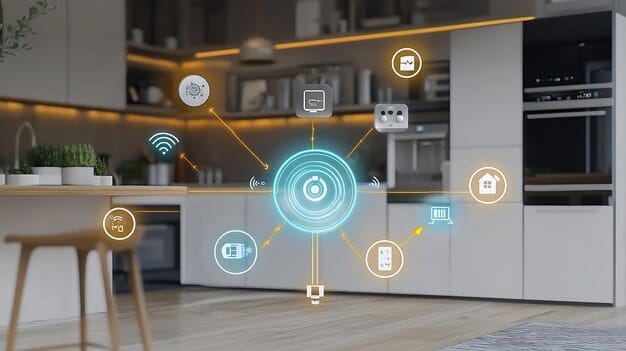
1. Flexibility and Reconfigurability
- FPGAs: One of the standout features of FPGAs is their ability to be reconfigured after manufacturing. This allows developers to adapt the design to changing requirements or optimize power management strategies without needing a new chip.
- Microcontrollers: Generally, microcontrollers offer limited flexibility. While some can be programmed for specific tasks, they cannot be reconfigured at the hardware level like FPGAs.
- ASICs: ASICs are designed for a specific application and lack reconfigurability. Once fabricated, any changes to the design require a complete redesign and new manufacturing, which can be time-consuming and costly.
2. Performance
- FPGAs: FPGAs excel in applications requiring parallel processing capabilities, making them suitable for real-time power management tasks. Their ability to handle multiple operations simultaneously leads to improved performance in power-sensitive applications.
- Microcontrollers: Microcontrollers are generally optimized for lower performance tasks and may struggle with real-time processing or complex power management algorithms. They are more suited for simpler applications with less demanding processing requirements.
- ASICs: ASICs typically provide the highest performance for specific tasks due to their tailored design. They can be optimized for power efficiency and performance, making them ideal for high-volume applications where performance is critical.
3. Power Consumption
- FPGAs: While FPGAs can be power-efficient, their flexible architecture may lead to higher power consumption in certain scenarios compared to ASICs. However, with the implementation of dynamic power management techniques, they can still achieve excellent energy efficiency.
- Microcontrollers: Microcontrollers generally consume less power than FPGAs, making them a better choice for battery-operated IoT devices where power conservation is paramount.
- ASICs: ASICs are the most power-efficient option for specific applications since they can be designed to minimize power consumption effectively. However, this advantage is offset by the lack of flexibility.
4. Cost
- FPGAs: The initial cost of FPGAs can be higher than microcontrollers due to their advanced capabilities. However, for low to medium production volumes, they may provide a cost-effective solution by eliminating the need for custom ASIC design and manufacturing.
- Microcontrollers: Generally, microcontrollers are the most affordable option for low-cost, low-volume applications. Their simplicity and widespread availability make them a popular choice for basic IoT devices.
- ASICs: Although ASICs can offer lower costs per unit in high-volume applications, the upfront design and manufacturing costs are significantly higher than FPGAs and microcontrollers. This makes them less suitable for small production runs or rapidly evolving technologies.
5. Development Time and Complexity
- FPGAs: Developing with FPGAs can be complex due to the need for hardware description languages (HDLs) and an understanding of digital design principles. However, their reconfigurability can reduce long-term development time, especially when changes are required.
- Microcontrollers: Development with microcontrollers is often simpler and faster, as they are typically programmed in higher-level languages like C or C++. This makes them accessible for developers with less hardware expertise.
- ASICs: ASIC development is the most complex and time-consuming, requiring significant investment in design and validation. The lengthy development process can lead to delays in bringing products to market.
6. Use Cases
- FPGAs: Best suited for applications requiring high performance, flexibility, and advanced power management strategies, such as smart grid solutions, advanced robotics, and sophisticated IoT devices.
- Microcontrollers: Ideal for low-power, cost-sensitive applications like simple sensors, basic wearable devices, and other low-complexity IoT solutions.
- ASICs: Most effective for high-volume, specific applications where performance and power efficiency are paramount, such as consumer electronics, automotive systems, and telecommunications
Conclusion
In the rapidly evolving landscape of IoT devices, effective power management is crucial for enhancing efficiency, extending battery life, and ensuring reliable operation. FPGA-based solutions provide a unique combination of flexibility, performance, and advanced power management strategies that make them highly suitable for various applications. Their ability to adapt in real-time through dynamic voltage and frequency scaling, power gating, and other innovative techniques enables developers to optimize energy usage effectively.
While FPGAs offer significant advantages, the choice between FPGAs, microcontrollers, and ASICs ultimately depends on the specific needs of the application. Microcontrollers are ideal for simpler, cost-sensitive projects where power efficiency is critical, while ASICs excel in high-performance, high-volume scenarios but require substantial investment and longer development cycles.
As IoT technology continues to advance, leveraging the strengths of FPGAs in power management will be key to developing next-generation devices that meet the demands of modern applications. By choosing the right technology, developers can create intelligent, energy-efficient IoT solutions that pave the way for a sustainable and connected future.





